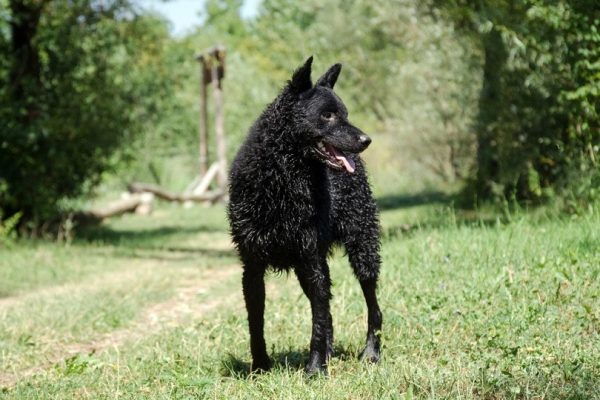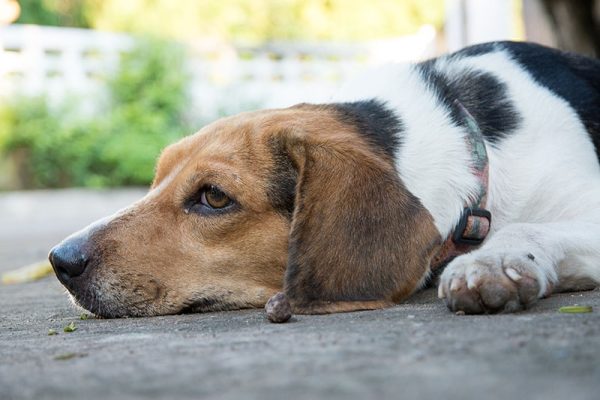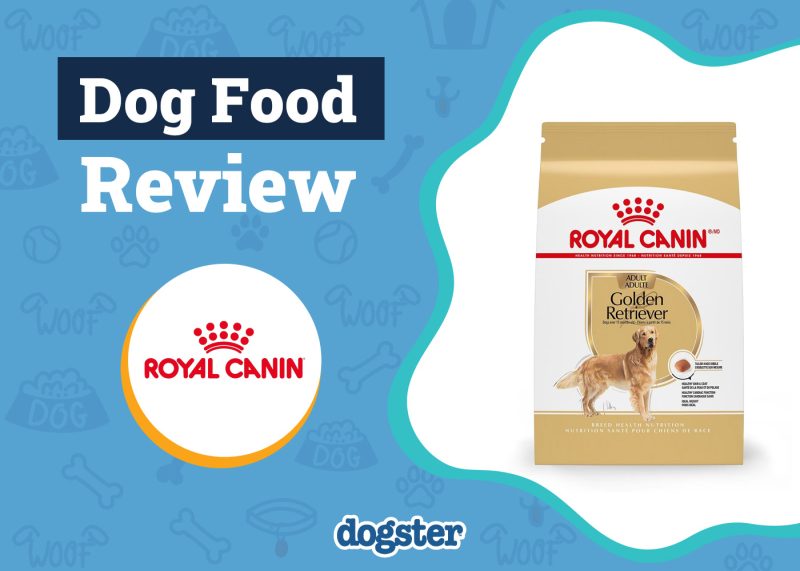In this article
View 4 More +Pugs are a popular pet, thanks to their compact size and friendly personalities. They’re like happy little potatoes who spread joy wherever they go. However, owning one of these adorable dogs can be quite expensive; not only do they require regular vet visits and food costs, but the initial purchase price of a Pug can range anywhere from $800 to over $2,000.
Their flat faces also lend themselves to skin and respiratory problems, potentially leading to costly vet bills over time. But if you’re still interested in owning one of these dogs, let’s look at how much you can expect a Pug to cost.

Bringing Home a New Pug: One-Time Costs
When bringing home a Pug, there are a few one-time costs you should consider. First, your pup will need a crate or a bed to call their own. Depending on the size and materials, these can range anywhere from $50–$200. In addition, many people choose to buy toys and accessories for their dogs so they can stay active and entertained.
These items range from squeaky toys and chew bones to various treats that provide both entertainment and nutrition.

Free
It’s possible that you may be able to get a Pug for free from a friend or family member who is looking to rehome theirs. However, it’s important to make sure that you know the person that you are getting the Pug from well, to make sure that the Pug is healthy and well taken care of. Otherwise, it’s best to get a Pug from a shelter or reputable breeder.
Adoption
- $100–$400
Adopting a Pug from an animal shelter or rescue organization is much more cost-effective than buying one from a breeder. Depending on the rescue organization, adoption fees can range anywhere from $100–$400. Additionally, most rescues will already have the dog spayed or neutered, so you don’t need to worry about additional vet costs. Plus, you’ll be giving a home to an animal in need!
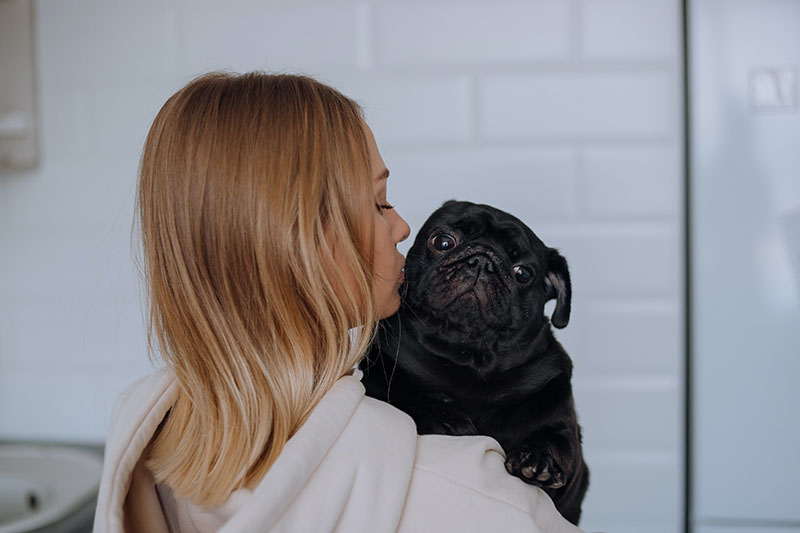
Breeder
- $800–$2,000
The initial cost to purchase a Pug can range from $800 to over $2,000 depending on the quality, age, and pedigree of the dog. Remember that these dogs require special care, so investing in a healthy and well-bred Pug is important. Do your research and make sure that you find a reputable breeder who can provide health certificates and vet records before purchasing and bringing your Pug home.
Initial Setup and Supplies
When you first bring your Pug home, you’ll need some supplies to help them adjust. This includes items such as food dishes, water bowls, and grooming tools. The exact amount of money you spend is up to you, but here are some cost estimates for some common supplies you’ll need.

List of Pug Care Supplies
| ID Tag and Collar | $15 |
| Spay/Neuter | $145 |
| X-Ray Cost | $100–$250 |
| Ultrasound Cost | $250–$500 |
| Microchip | $45–$55 |
| Teeth Cleaning | $150–$300 |
| Bed | $20–$50 |
| Nail Clipper (optional) | $7 |
| Brush (optional) | $8 |
| Toys | $10–$30 |
| Carrier/Crate | $40–200 |
| Food and Water Bowls | $10 |
| Food/Treats | $10–$30 |
How Much Does a Pug Cost Per Month?
On average, a Pug costs between $100 and $200 or more per month. This includes food & supplies, vet visits/vaccinations, and any other necessary care items. Of course, this number can vary depending on where you get your dog from, the quality of the supplies needed, and any medical treatments required.
Ultimately, owning a Pug is an investment that requires commitment and dedication—but it’s worth every penny in companionship!
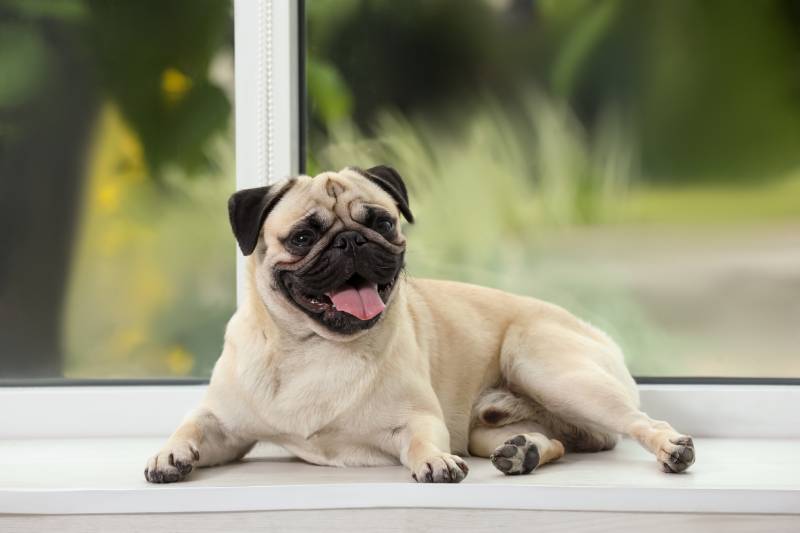
Health Care
- $20–$200+
Health care includes things such as food, veterinary care, and pet insurance. Veterinary care won’t be an every-month occurrence, but it’s important to keep potential costs in mind and put money away in the event that your Pug does need emergency vet care. Pet insurance is also optional, but can help eliminate unexpected vet costs.
Food & Treats
- $20–$50
Pugs require a steady diet of high-quality dog food to stay healthy, so you’ll need to set aside some money for this purpose every month. Dog food can be purchased in bulk for about $20 to $50 per month, depending on the size of the bag and the quality of the food.

Grooming
- $30–$60
Although Pugs don’t need as much grooming as a Poodle or Shih Tzu, it’s best to take them to a professional groomer or veterinarian for a bath. This is because Pugs have delicate skin folds and sensitive skin, so it’s better for a professional to bathe them instead of you doing it yourself. However, your vet or groomer can show you how to bathe your Pug properly, so this may not be an every-month expense either.
Vet Visits & Vaccinations
- $50–$100
Pugs need to go to the vet at least once a year for check-ups and vaccinations. The cost varies depending on where you live, but these visits usually range from $50 to $100 each time. Additionally, if any medical treatment is needed (such as spaying or neutering), the cost can increase significantly.
- Office visit: $35
- Vaccines: $20–$25 each
- Spay/Neuter: $100–$500
- Dental care: $50 and up
- X-ray: $75 and up
- Laboratory testing: around $35 and up
- Medications: $5–$20 per dose
- Deworm: $10–$20
- Grooming: $30–$70
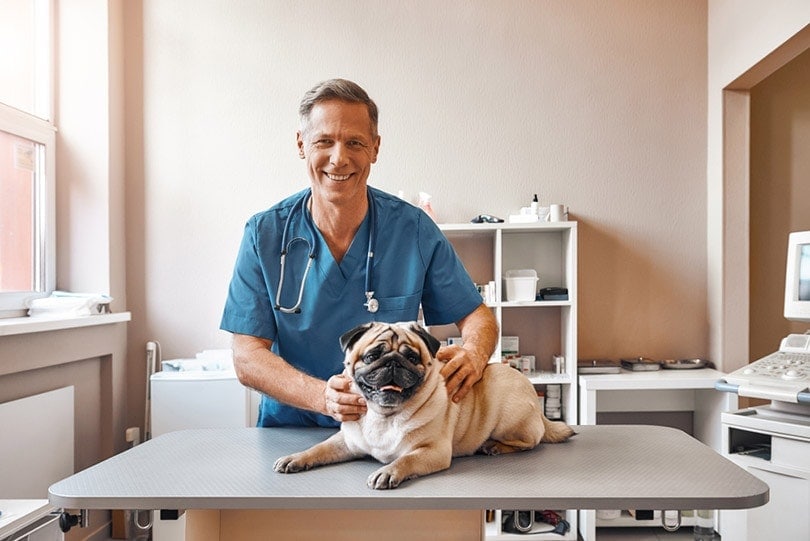
Pet Insurance Costs
- $20–$100
Pet insurance is an important consideration for any pet owner. It can help you cover costly medical bills if your dog needs emergency care or becomes ill. Depending on the policy, you could pay anywhere from $20–$100 each month for coverage. Before signing up, make sure to read the fine print so that you know exactly what is covered and what isn’t. Some plans pay your expenses upfront, and some require you to submit a reimbursement claim.

Environmental Maintenance
It’s important to note that the costs of caring for a Pug don’t just stop at vet visits and supplies. Keeping your dog’s environment clean and safe is essential to their health and happiness. This includes cleaning their crate or bed, grooming them regularly, and making sure they have stimulating toys to play with.
You should also be prepared to spend time each day walking and playing with your Pug to keep them healthy and happy.

Entertainment
Entertainment expenses for a Pug can include things like new toys, dog park entrance fees, or dog show fees. The amount you spend in this area is totally up to you and how much entertainment you want to give your Pug, other than daily walks and playtime, each month.
Total Monthly Cost of Owning a Pug
Taking all of these factors into consideration, the total cost of owning a Pug can range from $100–$200+ per month. This covers veterinary care, supplies, food, and environmental maintenance, but keep in mind that not all of these costs will occur monthly, such as veterinary care.
Of course, if you have multiple dogs or get into showing them at competitions, the costs will be even higher. No matter what your budget looks like, caring for a Pug is an incredibly rewarding experience, both for you and your furry friend!

Additional Costs to Factor In
Owning a Pug can be a wonderful experience, but it’s important to know that unexpected costs may arise. Costs can quickly add up if your dog suffers from health problems or needs emergency medical help. You should also consider setting aside money for special gifts and treats, like new toys or chew bones.
If you like to travel, you may also need to factor in the cost of boarding or pet-sitting. This could include a daily fee, plus additional charges for food and supplies. You may also have entry fee costs if you show your dog at fairs and dog shows.
Finally, keep an eye out for any unexpected costs associated with repairing the damage done by your Pug. Chewing on furniture or causing accidents in the house can quickly lead to costly repairs—so make sure you provide plenty of toys and activities to keep them busy!
Owning a Pug on a Budget
Owning a Pug can cost anywhere from $100 to $200 or more per month. However, with proper budgeting and research, you can keep your pet healthy and happy without breaking the bank.
Shop around for food and supplies, consider joining a pet insurance plan, opt for adoption instead of buying from a breeder, and look into discounts offered by your local veterinarian’s office. A bit of planning and effort can save you money and still ensure that your Pug has all the care it needs!
Another great way to save on bills is to use a vet telehealth service, which also saves you and your pup from a stressful visit to the vet’s office.
Saving Money on Pug Care
- Purchase supplies in bulk
- Buy food online for cheaper rates
- Clip coupons
- Search for free or discounted pet services in your area
- Check online classifieds and local Facebook groups for used pet supplies

Conclusion
All in all, owning a Pug can be expensive but rewarding. Initial costs range anywhere from $800–$2,000, depending on the breeder or rescue organization. On top of that, veterinary visits and vaccinations will set you back around $100 per year, while food and other supplies should come to about $100–$200 or more per month, depending on your taste and your dog’s needs.
So, if you are looking into getting a Pug, start saving! Financial responsibility is one of the most important aspects of pet ownership.
- Related Read: Do Dogs Need Vitamin E? What Are the Benefits and Risks?
Featured Image Credit: Tamara Hastings, Shutterstock




